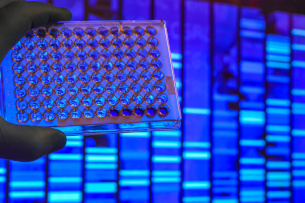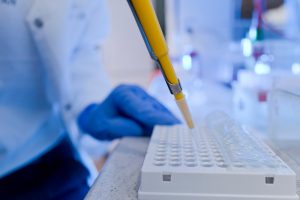The first forensic analysis with the use of genetic tests, known as “DNA fingerprinting”, was performed in Poland by scientists from the Institute of Human Genetics, Polish Academy of Sciences.

The history of genetic tests used for forensic medicine/ in forensics is over three decades old. The first forensic examination with the use of genetic tests was issued in 1989 on the basis of the result of an analysis called “DNA fingerprinting” carried out by prof. Ryszard Słomski from the Institute of Human Genetics, PAS, who was the first in the country to implement DNA tests for individual identification.
Inspiration to implement innovations
In the second half of the 1980s, human genetics was in its prime. Polish scientists watched with great interest pioneering work in the field of identification of people based on DNA research. Prof. Alec Jeffreys from the University of Leicester in Great Britain in 1985 showed that there are repeats in the human genome that are characteristic of individual people in the population. He described the method of their visualization by hybridization with a molecular probe as DNA fingerprinting.
Difficult beginnings
An opportunity to discuss and develop research on the introduction of a new DNA testing technology in Poland in forensic medicine and forensics was the plane crash of a Polish passenger plane in 1987, which resulted in the death of 183 people. Due to the extent of the damage and the lack of sufficient research tools, it was not possible to identify many victims of this tragedy.
Molecular research on the identification of persons was undertaken at the IHG PAS in the early nineties of the last century. At that time, it was the only institution in Poland to conduct such research. The breakthrough of this event is evidenced by publications in prestigious scientific journals and the fact that Polish courts and police became interested in them.
 Thus, the position of Prof. dr hab. Ryszard Słomski – a pioneer of DNA research and a leading scientist from the IHG PAS, encouraging the introduction of innovative methods of identification of people, finally found fertile ground. An important step in the research was to obtain biological samples from which genetic material could be isolated, initially analyzed with the use of hybridization methods combining DNA hydrolysis with electrophoretic separation and hybridization with short DNA fragments (probes). With time, they were replaced, after the implementation of PCR reactions, with amplification methods that were used and are still being widely used today.
Thus, the position of Prof. dr hab. Ryszard Słomski – a pioneer of DNA research and a leading scientist from the IHG PAS, encouraging the introduction of innovative methods of identification of people, finally found fertile ground. An important step in the research was to obtain biological samples from which genetic material could be isolated, initially analyzed with the use of hybridization methods combining DNA hydrolysis with electrophoretic separation and hybridization with short DNA fragments (probes). With time, they were replaced, after the implementation of PCR reactions, with amplification methods that were used and are still being widely used today.
The flourishing of DNA research in forensics
As a result of the development of research techniques, it became possible to identify people with a very high probability bordering with 100% certainty, unlike previous serological tests, which allowed for exclusion with a probability of 90%, and confirmation of compliance of blood group systems could have resulted from chance. Thanks to genetic testing, any secured trace of biological material that is a source of DNA, such as body fluids, tissue fragments, excreta or secretions, can now be used as evidence in the court case. The most commonly used DNA material for genetic testing comes from blood, saliva and semen. Advances in biological sciences and technological development over the last 30 years have provided new methods of DNA analysis that have made the results of genetic tests more detailed and have led to the reduction of the time of laboratory analysis to several hours, with a simultaneous increase in the sensitivity of the methods. This enables reliable results to be obtained from trace amounts of DNA material.
Effects and the social dimension
Currently, genetic tests are used to identify perpetrators of crimes, identify corpses (material for genetic testing may be obtained posthumously), establish kinship, identify people who hide their identity, and who do not remember their name and surname. Genetic research allows linking the perpetrator to the crime scene, and in the future, the current research on eye color, hair color and structure or ethnicity will help determine the appearance of a person based on the DNA sequence. The scope and potential of genetic research in forensic medicine and forensics initiated at the IHG PAS is evidenced, for example, by the Polish DNA Database of the Central Police Laboratory, where genetic profiles are collected and processed. As of December 31, 2019, 112 669 DNA profiles were registered (https://clkp.policja.pl/clk/baza-danych-dna/dane-statystyczne/109310,Number-profili.html).